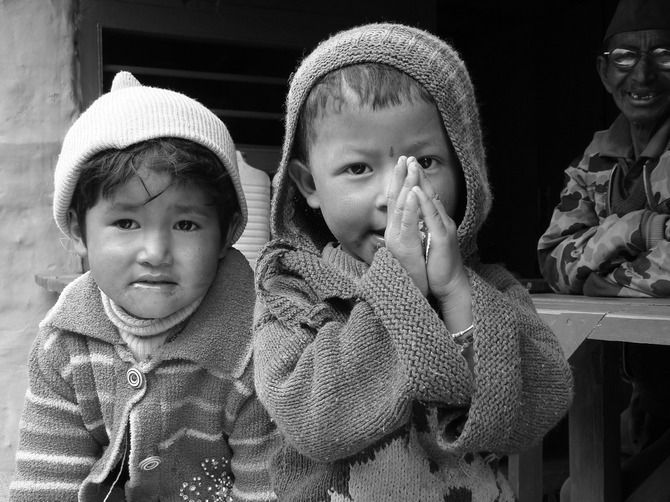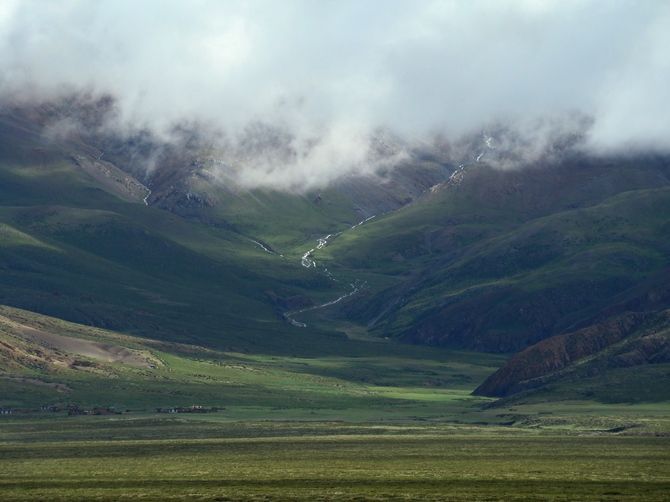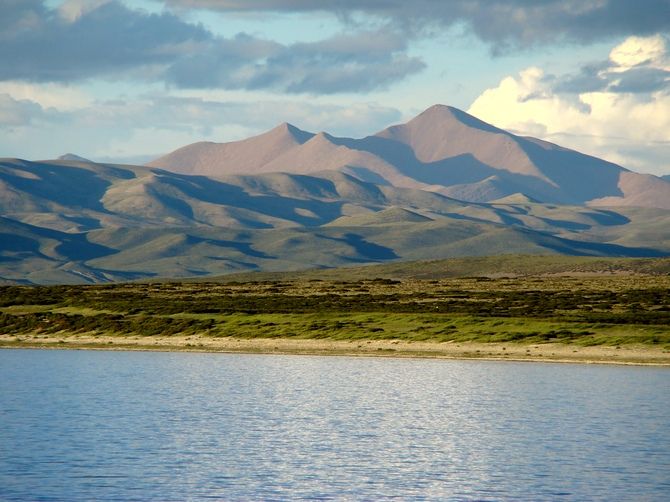 | « Back to article | Print this article |
Udit Wahie took the arduous trek and felt blessed.

The Kailash Manasarovar Yatra is a journey that is intense beyond anything that I ever experienced till now and it takes one to the edge of one’s thoughts or mind as it were.
Before the journey began, I was intrigued by a fellow yatri/traveller who had done this five times previously.
I did not hesitate to question him on his sixth sojourn to the Holy Kailash.
He smiled and told me that I would get my answer when my yatra is over... or rather he meant when my yatra would begin...

The pilgrimage entails an arduous journey of about 30 days by road and on foot through the undulating Great Indian Himalayas, the Kumaon region of Uttarakhand.
The focal point of the pilgrimage is about a three-day parikrama of the Mount Kailash which stands approx 22,000ft.
In its elements, it is solid black granite rock that stands apart from its surroundings which is a rather barren and cold desert landscape.
Also known as the abode of Lord Shiva, this site is revered and worshiped by four religions -- Hinduism, Tibetian, Buddism and Jainism.
Lake Manasarovar at an altitude of about 15,000ft is in a way at the base of Mount Kailash, is the source of four large rivers -- Brahamaputra, Karnali, Sutlej and Indus.
The holy Mount Kailash and Lake Manasarovar have clear mentions in the ancient Vedas as the centre of the cosmos. It is considered as one of the most divine places on Earth.

The journey through the Indian side begins at New Delhi.
The road journey till Kathgodam is a breeze which brings us to the foothills.
The road from there takes us to the ancient Himalayan town of Almora and further to Dharchula.
The road journey practically ends here. From here, the trek route begins and via small hill towns and himalayan villages of Shirkha, Gala, Budhi, Gunji, Kalapani, Nabhidang enters into Tibet via the Lipulekh Pass.

The narrow paths meader through thick foilage and untouched forests of deeper Himalayas.
Once in China, the base town in Tibet is Taklakot.
The actual parikrama begins at Dharchen (Dharshan)/ Yum Dwar and passes through Tibetan towns of Deraphuk.
Deraphuk is the village which brings us closest in view to the Holy Mount Kailash.
The journey further goes to Zongzerbu via the Dolma Pass which is the highest altitude reached in this journey, ie about 20, 000 ft.
The trek route further takes us back to Darchen which officially completes the parikrama of Mount Kailash.
What is intense about the yatra, is the journey itself rather that the destination.

Through the arduous path, one goes through a series of introspective moments.
One gets time to think and rethink about life, existence and other subtle thoughts which come to mind.
It is not just a trek or any journey but one that enlivens within a quest of self realisation and oneness.
Once the journey ended back in Delhi, I was filled with a heavy heart and the realisation of what the fellow yatri told me about why one feels like taking this yatra again and again...
I just smiled this time.
I could fill pages about the yatra.
But for the best I shall stop here and urge each one to try and do this pilgrimage at least once in a lifetime.
The journey shall thus begin…
You too can share your travelogues! Send in your travel experiences along with photographs to getahead@rediff.co.in (subject: Travelogue) and we will publish select responses right here on Rediff.com!